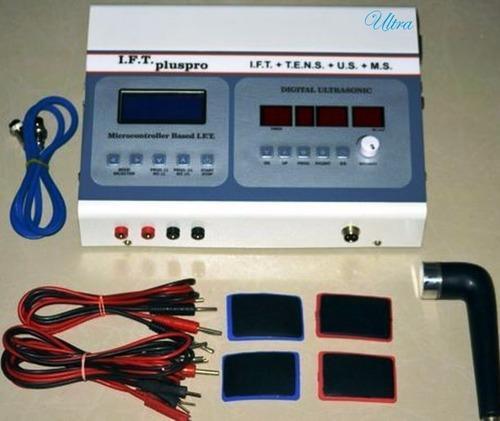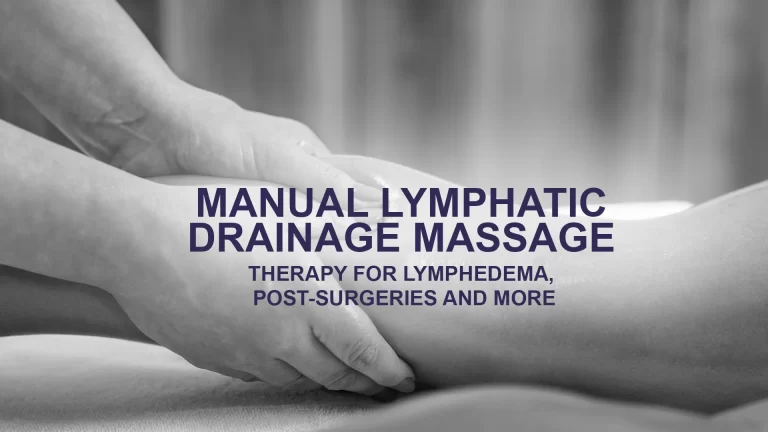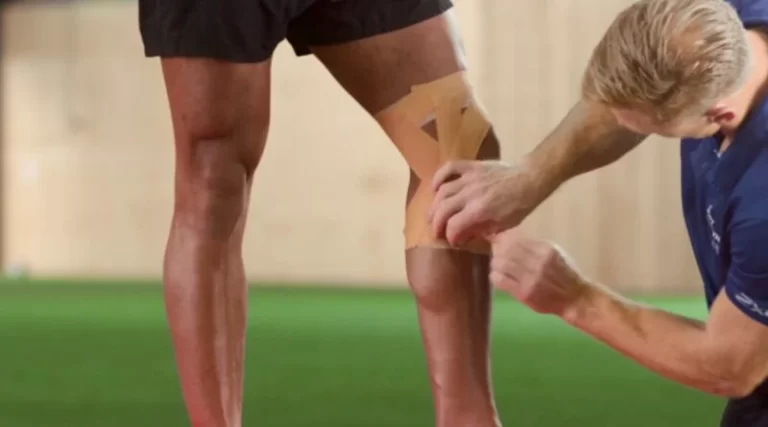Constraint Induced Movement Therapy (CIMT)
Table of Contents
What is a Constraint Induced Movement Therapy (CIMT)?
- The term Constraint-Induced Movement Therapy (CIMT) describes a package of interventions designed to lower the effect of a stroke on the upper-limb (UL) function of some stroke survivors.
- This is the behavioral approach to neurorehabilitation based on “Learned- Nonuse”.
- CIMT is typically performed for patients who have a cerebrovascular accident (CVA) as between 30-66% of CVA survivors will experience some functional loss in their affected limb. Moreover, CIMT has also been performed for patients with cerebral palsy (CP), traumatic brain injury (TBI), and multiple sclerosis (MS).
- The goal of CIMT is to improve and increase the use of the more involved extremity while restricting the use of the list-affected arm.
The three major components of CIMT include the following-
- Repetitive, structured, practice-intensive treatment in the involved arm.
- Restraint of the less affected arm.
- Application of a package of behavioral methods that removes gains from the clinical setting to the real world (i.e. making it functional).
Defining CIMT-
- The signature protocol for the original form of CIMT includes three components or ‘treatment packages:
- The intensive graded practice of the involved upper limb aimed at enhancing task-specific use of the involved limb for up to 6 hours a day for 2 weeks (i.e., shaping).
- Constraining or FU of the unaffected upper limb with a mitt to promote the use of the more affected limb during 90% of the active hours;
- Adherence-enhancing behavioral methods are structured to transfer the gains that exist in the clinical setting or laboratory to the patients’ real-world environment (i.e., transfer package).
- Consequently, CIMT uses operant training procedures applied in the context of rehabilitation medicine, while FU does not depend on any conditioning.
- Since its introduction, the first proof of the original CIMT concept was searched in 9 chronic stroke patients.
- Their positive findings in respect of motor function, dexterity, and self-reported arm-hand use in daily life were reproduced in a multicenter trial of 222 stroke patients.
- Trials by some other research groups have tried “modified” forms of CIMT (MCIMT) that are different in dosage, timing, and composition of therapy.
- While accepting the fundamental components of the original form of CIMT, these changes are typically distinguished by distributed training protocols with decreased time a lot in training, fewer time sessions in which the noninvolved upper limb is restrained, and the absence of a transfer package involving a contract with the patient, but a greater number of training days.
- Treatment duration for MCIMT different from 30 minutes(33-35) to 6 hours(36-44) a day, and from 2(45) to 7(46) duration a week, for 2(23, 36-45, 47-56) to 12 weeks.
- The huge variety of these alterations justifies a systematic review and succeding meta-analysis of trials petition original or CIMT.
Types of constraint-
- The purpose of CIMT is to merge restraint of the unaffected limb and intensive use of the affected limb.
- Types of restraints include a sling or triangular bandage, and a splint.
- A sling incorporate with a resting hand splint, a half glove, and a mitt.
- Determination of the type of restraint used for therapy based on the required level of safety vs. intensity of therapy.
- Some restraints restrict the wearer from using their hand and wrist, though allow the use of their unaffected upper extremity for protection by extension of their arm in case of loss of balance or falls.
- However, restraints that allow some use of the non-involved extremity will result in less intensive practice because the unaffected arm can still be used to complete tasks.
- Constraints typically include placing the mitt on the unaffected hand or a sling or splint on the unaffected arm, forcing the use of the involved limb with the goal of promoting useful movements while performing functional tasks.
- The use of the uninvolved limb is called shaping.
Duration and timing of “traditional” and “modified” CI therapy program-
- Traditionally, CIMT involves restraining the unaffected arm in patients with hemiparetic stroke or hemiparetic cerebral palsy(HCP) for 90% of waking hours while appealing to the affected limb in a range of daily activities.
- Nevertheless, given concerns with compliance (both among patients and clinicians), reimbursement, and patient safety, studies have different hours of restraint per day and lengths of therapy.
- More specifically, CIMT includes the person performing supervised structured tasks with the involved limb 6 hours a day for 10 days over a 14-day period, Furthermore, wearing the restrictive mitt or sling for 90% of waking hours.
- Alternatively, modified constraint-induced movement therapy protocols have been institute to be equally effective as “traditional” CI therapy protocols.
- The most accepted, commonly used, and evidence-based form of modified CI therapy that has been found to be effective in improving motor control asks patients to attend goal-directed therapy sessions long lasting a half hour per day, on 3 days/week over a 10-week period. Simultaneously, patients wear a mitt on the noninvolved limb for 5 hours/weekday during the same 10-week period.
- Furthermore, it gives more practice with the affected limb than “traditional” CI therapy over the 10-week period, the regimen is in greater accord with outpatient therapy regimens around the world, is slight costly, and the effectiveness has been shown to be comparable to a more intensive CI therapy schedule.
- Doctors say that stroke survivors disabled for many years have recovered the use of their limbs using CIMT. But, it has been shown that starting CIMT early on (3–9 months post-stroke) will result in greater functional gains than receiving delayed treatment (15–21 months post-stroke), without any well-being associated with its administration acutely (< 3 months post-stroke). However, modified CI therapy protocols have shown greater treatment effects when administered in the acute phase.
Application of constraint-induced movement therapy-
- Both CIMT and modified CIMT can be applicable to up to 20–25 percent of stroke patients, and the amount of getting better
produced by either regimen takes shape to diminish as the initial motor ability of the patient decreases. - Both CIMT and modified CI therapy have been shown to be constructive means of stroke rehabilitation regardless of the level of initial motor ability quantity of chronicity, the quantity of prior therapy, the side of hemiparesis, or infarct location.
- This suggests that plasticity can work irrespective of the pathways in the injured motor network.
- Although, due to the timing of this treatment, patients who have had intense upper extremity paralysis from their condition are normally not allowed for constraint-induced upper extremity training.
- A consistent exclusion criterion for CIMT and modified CI therapy has been the not able to perform voluntary wrist and finger extension in the affected hand.
- As mentioned above, this criterion typically limits the population allowed for this family of therapies to 20–25% of the entire stroke population.
- CIAT (Constraint Induced Aphasia Therapy) is an adaptation of CIMT for people who have Aphasia. It may be used for patients with either expressive or receptive aphasia.
- Such as CIMT, treatment is intensive and usually happens over a ten-day period for several hours per day. In CIAT, patients should use verbal communication without gestures or pointing in order to communicate.
- The constraints are situated on the use of gestures with the goal of improving verbal communication.
- Also like CIMT, CIAT has been shown to not be practicable in most clinical environments due to its parameters and distributed protocols are now being searched.
- Both constraint-induced movement therapy (CIMT) and modified CI therapy merged with intensive and varied exercise training have proven to be productive in reducing spasticity and increasing the function of the hemiplegic extremity in chronic stroke patients.
How does CIMT Work?
- Constraint-induced movement therapy or CIMT is centered on retraining the brain following damage to increase the functional use of the affected arm and hand.
- Research has shown that practicing exercises with the affected arm while restraining the normally functioning arm over a period of time leads the brain to reactivate itself.
- This then permits the person to learn new motor activities or reinstruct motor skills that may have been lost.CIMT can be used shortly after neurological injury, to construct most of the brain’s ability to interchange during this period.
- It is also worthy for people in the later stages of rehabilitation whose development may have been highlighted.
Improvements in hand function are achieved by:
- Intense, repetitive task practice using the affected arm
- Decreases compensatory activity with the noninvolved side by restraint in a mitt/glove
- Re-instruct the person’s attention to the affected arm by focusing on using the paretic arm in structured activities and functional tasks. Replicate these activities over a period of time that result in successful and productive experiences with the affected arm.
- Increasing the person’s motivation to use the affected arm, through success in a fun and fascinating activities that may have looked impossible before.
- The benefits of constraint-induced movement therapy and its modified versions have been found to improve movements that not only stay steady for months after the completion of therapy but convert well to improvements in everyday functional tasks.
Benefits of CIMT:
- Evidence has shown that constraint-induced movement therapy or CIMT may significantly improve a person’s upper limb function leading to a greater amount of use as well as increased quality of movement of the affected arm.
- Acquisition of new motor skills.
- Increased use of the involved arm in functional activities like dressing, eating, tying shoe laces, and brushing teeth.
- Improved quality of movement.
- Enhanced independence with everyday tasks.
- Improved sense of well-being.
- Improved quality of life.
- CIMT is an intense type of treatment with long-term success but commitment to the program is vital in order to get the most out of a person’s treatment.
- Following CIMT therapy people often go on to make significant improvements in hand function which may have an intense effect on independence with daily activities and quality of life.
Indication-
Stroke Onset:
- Review when the stroke really happened and how that could affect treatment.
- If the patient is only post-stroke for a few days, Most likely they have other worries that take greater priority over using their involved arm (i.e. being able to breathe, staying hydrated, regulating heart rate and blood pressure, obtaining food, conquering pain, etc.).
- A patient who has had a recent stroke can emotionally come to turn and not be able to handle a CIMT program, which could result in non-compliance and expanded frustration.
- In the end, if the stroke is new, there can be no way of telling what the hemiplegic extremity will look like until several weeks out.
Post-stroke Symptoms:
- Moreover, patients will prioritize their symptoms and new limitations: vision, perception, emotional regulation, core instability, overall immobility, non-ambulation, irregular vitals, feeding precautions, and language changes.
- Occupational therapists need to know those limitations and let the patient voice their trouble and goals about their treatment.
- An occupational therapist can be able to apply modified CIMT around those troubles but needs to be honest with the patient and identify when to back off if necessary.
- Therapists should also note:-involving the paretic arm could hurt, especially if the patient has detectable shoulder subluxation or atrophy (at any time post-stroke).
- Be put together to accommodate for those symptoms
Who is Suitable for CIMT?
- Constraint-induced movement therapy (CIMT) is suitable for both adults and children with disablement of one upper extremity related to damage to the brain at birth, in development, or later on in life.
- CIMT has been proven to be particularly effective in stroke patients.
- Spinal Cord Injury
- Multiple Sclerosis
- Cerebral Palsy
- TBI (traumatic brain injury)
- The therapist will conduct an initial screening assessment of patients to identify suitability and outline details of the full program which will be customized to the person’s individual needs and goals.
The CIMT program at Rehab Basics involves:
- Restraint of the noninvolved upper limb in a mitt, cast, or glove.
- Repetitive use of the paretic upper limb during short, structured tasks.
- Functional tasks are relevant to the person’s daily function.
- Homework assignments that encourage the patient to use their affected arm outside of the clinic setting.
- CIMT is an intense form of treatment designed to achieve maximum benefit over a less period of time for long-term functional gains; it therefore may require a person’s full commitment to the program.
- Support and motivation are provided throughout the program.
- Our CIMT programs for children are different in order to increase their participation in therapy.
- Although the same principles try the therapist will center the therapeutic tasks around play activities to encourage the use of the child’s affected arm whilst the uninvolved arm is restrained.
CIMT in Pediatric
- Constraint-induced movement therapy (CIMT), is an innovative, scientifically supported therapy of upper extremity rehabilitation for pediatric patients with neuromotor impairments.
- CIMT is gaining successful support and emerging as a good practice in the treatment of children with hemiplegia.
- CIMT includes the constraint of the non-affected upper extremity in the merger with intensive therapy.
What are the goals of CIMT?
- To improve more continuous use of the involved upper extremity.
- To improve the quality of movement of the involved upper extremity.
- To improve overall functional use of the paretic upper extremity.
- To improve quality of life skills.
Who may benefit from CIMT?
- The three most important groups of pediatric patients may benefit from CIMT:
- Children who include clinical presentation of upper limb hemiplegia who can initiate and move that upper extremity.
- Children who are skillful to follow directions and work in intensive therapy.
- Children whose parents/caregivers are accomplished put their time into this program.
Functional activities completed during treatment sessions for children may include:
- Stacking blocks
- Turning cards
- Ball play
- Using playdough
- Reaching and grasping objects
- Pediatric CIMT-trained physiotherapists use a huge variety of equipment including toys and games to help maintain attentiveness and make therapy enjoyable and effective for children.
- Parents will be actively involved in the program and will be taught appropriate activities to complete with their child outside the clinic setting in order to help fulfill their child’s potential.
FAQ
The CI Therapy approach has been used fortunately to date for the upper limb of patients with chronic and subacute CVA and patients with chronic traumatic brain injury and for the lower limb of patients with CVA, incomplete spinal cord injury, and a fractured hip.
Lower limb CIMT is effective at increasing outcomes such as balance, functional mobility, motor function, gait speed, oxygen uptake, exertion before and after commencement of activities, knee extensor spasticity, weight-bearing, lower extremity kinematic, and quality of life following a stroke.
Occupational therapy studies also prop up the effectiveness of CIMT for stroke patients.
Constraint-induced movement therapy or CIMT is centered on re-schooling the brain following damage to increase functional use of the affected arm and hand. Research has shown that practicing exercises with the weaker arm while restraining the normally functioning arm over a period of time leads the brain to rewire itself.
This therapy involves constraining movements of the list-affected arm, usually with a sling or mitt for 90% of waking hours, while intensively inducing the use of the more-affected arm. Vigorous, repetitive training of the more-affected limb is generally performed for six hours a day for a two to three-week period.






